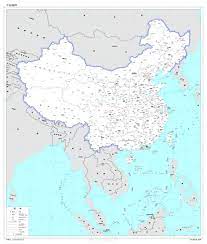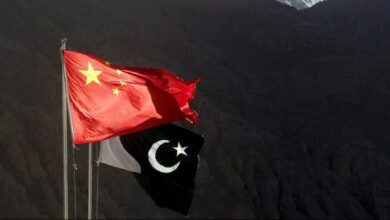What Territorial Disputes Does China Have With Neighbors, and Why Has Russia Rejected China’s New Map?
In a new map released this week, Russia has disputed Chinese claims to its land.
Indian, Indonesian, Philippine, Malaysian, Nepalese, and Taiwanese protests against the new map that depicts Chinese territory that these nations claim as their own have so far been recorded.
India, Taiwan, or the Philippines are obvious targets for Chinese expansionist schemes, but Russia joins the list as a surprising addition since it is thought to be China’s closest ally on the international scene. However, the new Chinese map also showed Russia’s borders. Though less blunt than India’s, Russia dismissed China’s assertions and said that the map violated the 2005 bilateral agreement intended to settle the issue.
The whole Bolshoi Ussuriysky Island was designated as Chinese territory on the Chinese map. China and Russia reconciled their decades-long disagreement in 2005, and by 2008, the disputed island had been divided. According to the agreement, China received 170 of the island’s 350 sq km along with a few other surrounding islands, while Russia retained ownership of the remaining disputed territory. In rejecting the revised map, Russia reaffirmed this.
Here, we discuss what the new Chinese map depicts, what Russia responded, and all of China’s territorial claims.
Why is the new Chinese map such a hot topic?
China issued a new national map on Monday that infuriated the majority of its neighbors. The explanation was straightforward: China had seized control of their lands.
The Chinese assertions were broad. It claimed Bolshoi Ussuriysky Island from Russia, Aksai Chin from Ladakh and Arunachal Pradesh in India, a sizable portion of the South China Sea from Southeast Asian nations such the Philippines, Malaysia, and Indonesia. Nepal’s criticism was distinct since it objected to the Chinese map’s inclusion of three Indian areas that it claims as its own—Limpiyadhura, Kalapani, and Lipulekh—within Indian boundaries.
Chinese claims in India are based on Tibet’s earlier claims. Ladakh and Arunachal are both regarded by China as being a part of Western Tibet. China uses the nine-dash line theory in the South China Sea to assert sovereignty over a larger area, which is denied by other nations in the area.
China has claimed the whole Bolshoi Ussuriysky Island in Russia. The island and its surroundings were amicably divided between the two nations over ten years ago, putting an end to a conflict that had existed there since the 19th century.
What was said by Russia?
The land that China claimed as its own had previously been resolved via an agreement, according to Russia, which rejected the Chinese map.
The dispute is located on the Bolshoi Ussuriysky Island, which China has completely claimed on the new map. The Ussuri and Amur rivers, which divide Russia and China, meet at the island and its surroundings. Around 1860, the first concerns about the region’s governance began to surface.
However, a settlement to the Bolshoi Ussuriysky Island issue was reached in 2005, and the island’s division was finished by 2008, according to Maria Zakharova, a spokeswoman for the Russian Foreign Ministry.
“The Russian and Chinese sides adhere to the common position that the border issue between our countries has been finally resolved,” Zakharova was cited by Newsweek as saying. The Supplementary Agreement on the eastern Russian-Chinese state boundary, which split Bolshoi Ussuriysky Island between the parties, was ratified in 2005, marking the end of the conflict. Our shared boundary has been fully demarcated and delimited for about 4,300 kilometers (2,670 miles), including Bolshoi Ussuriysky Island in 2008.
According to Newsweek, Zakharova claimed that the “resolution” of the conflict “was the result of many years of efforts by both sides, a reflection of the high level of relations between the two countries, made an important contribution to ensuring security and stability in the region, and is a successful example of resolving border disputes for all countries of the world.”
The two nations have previously claimed that there are no border conflicts, according to Zakharova.
“Repeatedly, Russia and China have affirmed the lack of any shared territorial claims, and the Treaty on Good Neighborliness, Friendship and Cooperation of July 16, 2001 has a clause to that effect. The Joint Border Commission, which successfully handles all pertinent matters, is part of the parties’ broad system of contact in the area of border cooperation, according to Zakharova.
The major Bolshoi Ussuriysky Island was divided in 2008 when the conflict was resolved. In exchange, Russia gave China a 170 sq km portion of the island. Vinogradov, Koreysky, and Romashkin, three smaller islands, were also given to China to settle the conflict.
What territorial conflicts does China now have?
China has gained a reputation in recent years as an expansionist state that constantly asserts its territorial claims and provokes its neighbors with acts like the publishing of maps or attempts to alter the reality on the ground via invasions or military exercises.
China has territorial claims to a total of 15 nations, yet the majority of the world is only aware of its three boundary conflicts with India, Japan, and the South China Sea. Then there is the situation of Taiwan, a sovereign island that is claimed by China as a separatist force. China has vowed to unite Taiwan with the mainland and hasn’t ruled out using force in the process.
Along with India, China also claims sovereignty over a portion of the northeastern states of Arunachal Pradesh and Ladakh. It claims that Arunachal is Southern Tibet and that Ladakh is a part of Western Tibet. The Chinese assert that since Tibet is part of their country, so are Tibet’s claims.
China claims the Senkaku Islands with Japan. These arelets are known as Diaoyu Islands in China.
China claims the great portion of the South China Sea as its own, which puts it at odds with other nations in the area. China bases its claim on the “nine dash lines” on its maps and on history.
According to The Week, China has territorial conflicts with 15 other nations. These nations are Philippines, Vietnam, Japan, India, and the Philippines Nepal, Bhutan, Indonesia, Malaysia, Laos, Singapore, South Korea, No. Korea, No. 12, Mongolia, Myanmar, No. 13, Myanmar, No. 14, and Myanmar.
There is also the long-standing conundrum of Tibet. Although Tibetans want their country to be an independent country, China views it as an essential component of its territory. It invaded the nation in 1949–1950 and has ruled the area ever since with an iron fist, driving the Dalai Lama into exile as well as imposing the language and culture of the Chinese mainland on the long-established Tibetan people.







